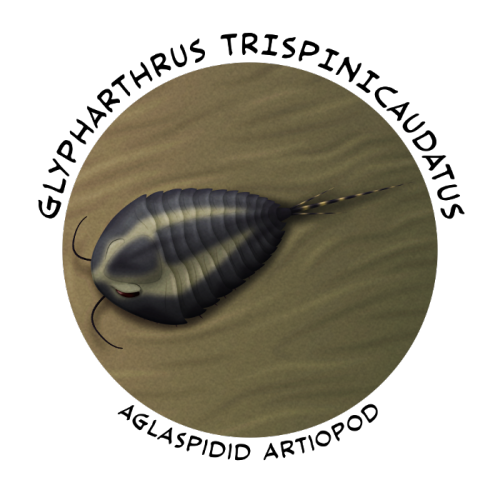alphynix:Cambrian Explosion #51: Artiopoda – Surprising LookalikesThe aglaspidid artiopodans w
alphynix:Cambrian Explosion #51: Artiopoda – Surprising LookalikesThe aglaspidid artiopodans were a major lineage of early Paleozoic euarthropods – one of the most diverse after their cousins the trilobites, although far far behind them in terms of actual species numbers.But despite their diversity and worldwide range actual fossils of them are incredibly rare, and for a long time they were considered to be a “problematic” wastebasket group of uncertain affinities, mainly interpreted as being related to the chelicerates. More recently evidence from preserved limb anatomy has instead placed them within the artiopodans in a grouping known as vicissicaudatans, closely related to forms like Sidneyia and the later cheloniellids.Unusually for euarthropods they had a phosphatic exoskeleton, and they experienced their main burst of diversification in the late parts of the Cambrian period, after most of the actual evolutionary explosion had already settled.They mainly inhabited shallow near-shore environments, and may actually have been some of the very first animals to venture onto land. Some examples of the trace fossil Protichnites might represent aglaspidids scuttling over the Cambrian shorelines to mate and lay their eggs in a similar manner to horseshoe crabs.———Kodymirus vagans was first discovered in the 1960s but was an enigmatic species for quite a while. It was interpreted as the earliest known sea scorpion in the mid-1990s, but more recently it’s been reclassified as a vicissicaudatan artiopodan that wasn’t quite a true aglaspidid, instead being a very closely related “stem” lineage.Known from the Paseky Shale in Czechia (~514-509 million years ago), it reached about 8cm long (~3") and had a distinctive pair of large spiny appendages that resembled the “great appendages” of stem-euarthropods like megacheirans. However, unlike the disputed anatomical origins of those structures, Kodymirus’ huge claws were instead modified from its first pair of legs in a striking case of convergent evolution.(Some older reconstructions depict it with six pairs of enlarged limbs, but this is based on the outdated sea scorpion interpretation. A more recent study of specimens found individuals were only ever preserved with one pair each.)It lived in very shallow brackish coastal waters in a calm lagoon, in what seems to have been a rather sparse ecosystem completely lacking many common Cambrian animals like trilobites and brachiopods. Possibly the environment was isolated and inhospitable enough that it allowed Kodymirus to take advantage of an ecological role usually occupied by other arthropods.Scratch-mark trace fossils in the Paseky Shale match the size and shape of Kodymirus’ raptorial appendages, but only ever show one side being used at a time. This suggests it was an active predator that swam along just above the seafloor, trailing the spines of one appendage through the soft surface of the sediment and “skimming” for hidden prey to grab.———Glypharthrus trispinicaudatus was part of a lineage of Cambrian aglaspidids that were even more trilobite-shaped than most other artiopodans, convergently evolving a very similar appearance despite not being particularly closely related to them.Known from the Guole biota in southern China (~490 million years ago), it was about 3cm long (1.2"). It had a large semicircular head shield with elongated eyes, 12 body segments, and a pair of furcae and a long tail spine at the rear of its body.Like most aglaspidids it inhabited fairly shallow waters, with the Guole fossil assemblage probably representing an upper continental slope.———The aglaspidids were successful and hardy enough to survive past the end of the Cambrian and into the Ordovician – although “Ordovician-type” members of the group had a distinct appearance compared to their earlier relatives, with more rounded head shields and their eyes either very reduced or missing entirely, suggesting that they took up a different lifestyle.They eventually disappeared towards the end of the Ordovician, about 450 million years ago, possibly struggling to cope with increasing competition from the ongoing Great Ordovician Biodiversification Event.———Nix Illustration | Tumblr | Twitter | Patreon -- source link
Tumblr Blog : alphynix.tumblr.com

